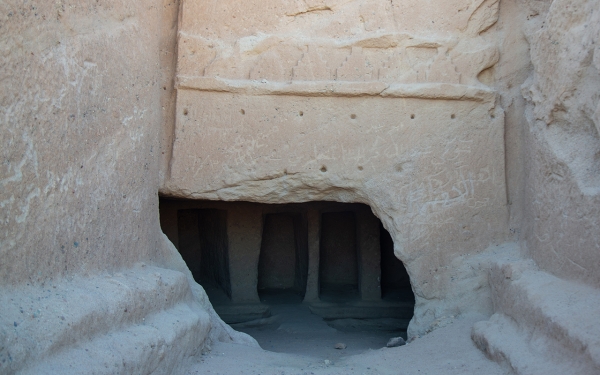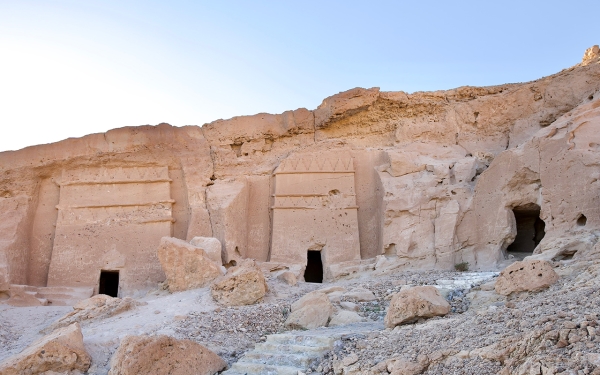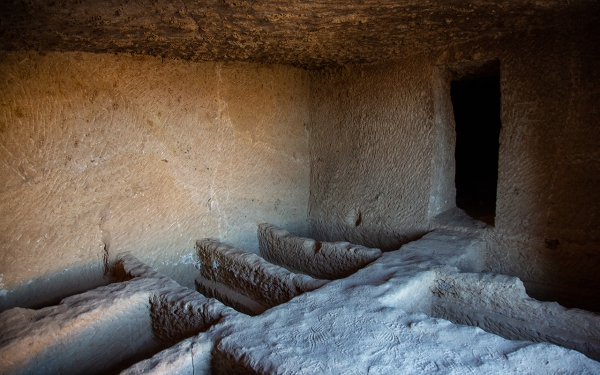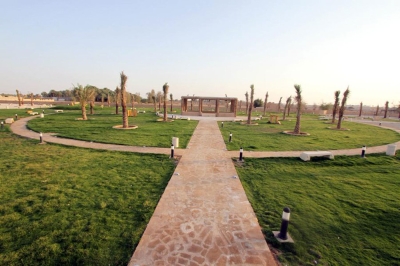



Madyan Shuaib, also known as Midian or Maghair Shuaib, is an archaeological and tourist site located in the al-Bad Governorate in the Tabuk region, northwestern Saudi Arabia. It consists of carved rock facades on mountains, ancient wells, and hollows carved into the depths of the mountains. The site was used as burial grounds and homes by the Nabateans and earlier by the Midianites. Additionally, inscriptions and monuments of the Lihyanite, Nabataean, and Islamic civilizations were found at the site.
Madyan Shuaib was known around three thousand years ago as an oasis called Madian. It was a central trade point connecting the Arabian Peninsula with the Sinai Peninsula and Egypt due to its location on the caravan trade route from the southern Arabian Peninsula towards the Levant. The people of Madyan used to work in agriculture and trade, which resulted in the region's prosperity between 100 BC. and 550 AD.
The Origin of the Name Madyan Shuaib
During the medieval Islamic era, it was named Madyan Shuaib or Maghair Shuaib after Prophet Shuaib, who was sent to the Midianites according to Islamic religious texts. The Quran refers to the inhabitants of Midian as the people of Shuaib or the Midianites. According to the verses of Surah al-Qasas, Madian was where the Prophet Moses (peace be upon him) met with the Prophet Shuaib (peace be upon him) after he departed from Egypt.
Location of Madyan Shuaib
Madyan Shuaib is approximately 225 km away from Tabuk City and around forty-five km from the coast of the Gulf of Aqaba. It can be reached from the archaeological site of al-Ula in a five-hour drive. Moreover, it is situated at a distance of 432 km from the Red Sea Tourism Project and falls within the scope of the NEOM project.
The rocky facades of Madyan Shuaib bear similarities to the Hegra site, which is recognized as a UNESCO World Cultural Heritage Site due to the Nabataean architecture and inscriptions that suggest the presence of Nabateans in the area.
Ruins of Madyan Shuaib
Madyan Shuaib includes around eighty tombs scattered over twelve cavities and rock formations. The tombs are divided into four neighboring groups in the shape of a semicircle. They are of different sizes and lengths, and each of them is located on a single mountain. The rocky cavities contain residential rooms (two x three m), seven-foot horizontal tombs in the wall and on the ground, storage units, and cavities at the depth and height of two m.
The rock formations that were carved to create the facades of Madyan Shuaib have been significantly affected by weathering factors, unlike the rock formations at the Hegra site. Madyan Shuaib is composed of sandstone and limestone rocks, whereas the tombs at Hegra are taller and filled with intricate details and decorations.
The houses and tombs of Madyan Shuaib were carved into the rocky heights to seek shelter from the floodwaters coming from Wadi Afal. On some facades, geometric decorations appear as triangles, crowns, and overlapping arches. Stone steps lead to some of the houses and cavities.
Related quizzes
Related articles


